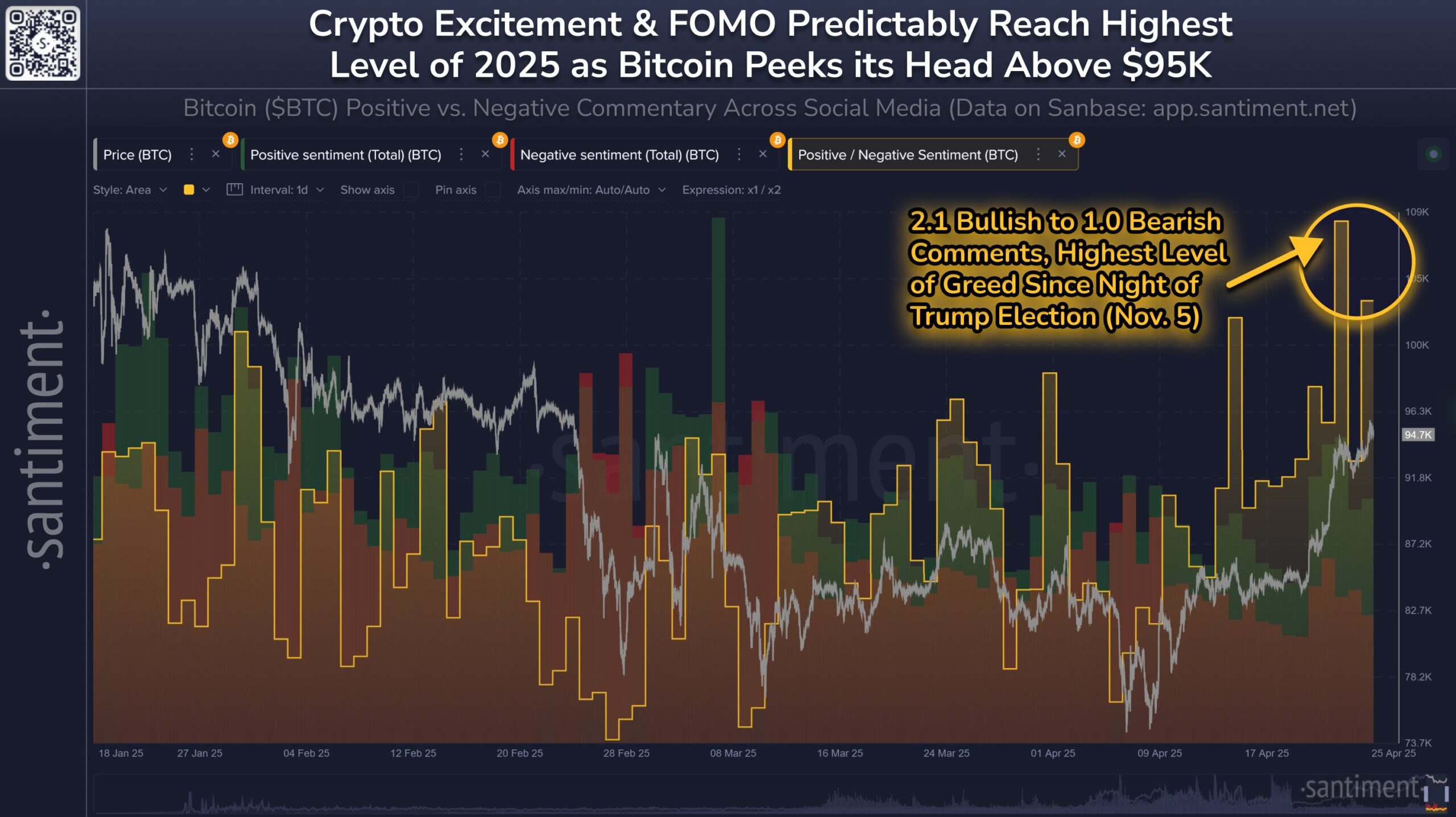Bitcoin has recently experienced a notable rally, pulling the price back above $90,000 after over five weeks of stagnation. As of now, Bitcoin is trading near $94,401, just shy of the critical $95,761 resistance.
This suggests that Bitcoin is not yet at its saturation point, with further upward momentum possible if key barriers are breached.
Bitcoin Investors Are Greedy
The market sentiment surrounding Bitcoin remains overwhelmingly positive, with investors showing high levels of optimism for further price gains. Social media posts indicate a sharp spike in bullish sentiment, with the number of optimistic (versus bearish) posts reaching levels not seen since the night of Donald Trump’s election on November 5, 2024. This surge in positivity suggests that many investors are poised to capitalize on Bitcoin’s potential growth, further fueling its rally.
However, the extreme level of greed in the market raises questions about the sustainability of this upward movement. As investor sentiment becomes increasingly optimistic, there is a risk that this could lead to a local top if too many traders become overly greedy.

The broader macro momentum for Bitcoin is signaling a rebound, particularly in the Profit/Loss (P/L) ratio, which is nearing a neutral 1.0 level. This shift indicates a balance between coins in profit and those in loss. Historically, the 1.0 threshold has acted as resistance during bear phases, but a sustained move above this level could signal a stronger recovery and continued upward momentum for Bitcoin.
While the shift towards a neutral P/L ratio suggests potential strength, it also opens up the possibility of selling pressure as investors look to lock in profits. Therefore, Bitcoin’s ability to maintain momentum will depend on how investors react to price movements and whether they decide to sell or hold their positions.

BTC Price Needs A Push
Bitcoin’s recent price action shows a 10% increase in the last seven days, trading at $94,401. The crypto king is now just below the significant $95,761 resistance level, which has been holding steady for some time. A break above this level would set Bitcoin on track to reach new highs, with $100,000 as the next major milestone.
Should Bitcoin breach $95,761, the growing greed within the market will likely encourage investors to hold their positions rather than sell. This will likely feed the altcoin’s bullish momentum, pushing Bitcoin further toward $100,000 as demand remains strong among traders eager to capitalize on potential gains.

However, if Bitcoin fails to maintain its position above $93,625, the price could fall toward the $91,521 support. A deeper decline to $89,800 could put the bullish momentum at risk, delaying any immediate recovery and increasing the chances of a consolidation phase.
The post Bitcoin Greed Gauge Flashes Red While Price Hovers Around $94,000: Next Stop $100,000? appeared first on BeInCrypto.






